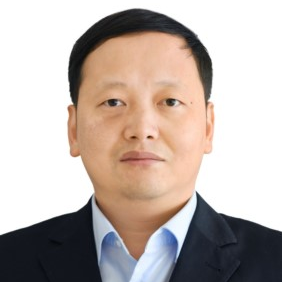Shape Memory Alloys: Material, Structure, Modeling and Application
A special issue of Materials (ISSN 1996-1944). This special issue belongs to the section "Mechanics of Materials".
Deadline for manuscript submissions: closed (20 May 2023) | Viewed by 2440
Special Issue Editors
Interests: multi-field coupled cyclic constitutive models; fatigue and fracture of advanced materials; elasto-plastic finite element analysis of engineering structures; rolling contact fatigue
Special Issue Information
Dear Colleagues,
In the past several decades, shape memory alloys (SMAs) have been at the forefront of material research. Owing to their excellent super-elasticity and shape memory effects resulting from their solid–solid thermo-elastic martensite transformation as well as their strong biological compatibility, SMAs have been used for a wide variety of applications in various fields, such as biomedicine, microelectromechanical systems, aerospace, civil engineering, etc. Currently, the most important problems with SMAs include (1) how to improve the basic thermo-mechanical properties of the material; (2) how to understand the underlying physical mechanism of super-elasticity and the shape memory effect; (3) how to develop theoretical models in different spatial and time scales; and (4) how to design SMA-based devices and structures for use in engineering applications.
This Special Issue, titled “Shape memory alloys: material, structure, modeling and application”, will focus on the preparation, characterization, modeling, and application for SMAs and their structures. We invite the submission of research articles, communications, and reviews on topics including but not limited to the following:
- Preparation and performance optimization of SMAs;
- Characterization of thermos-mechanical properties of materials and structures of SMAs;
- Development of multi-field coupled constitutive models, multi-scale modeling, and fatigue failure assessment for SMAs;
- Intelligence and structural applications of SMAs.
Prof. Dr. Qianhua Kan
Dr. Chao Yu
Guest Editors
Manuscript Submission Information
Manuscripts should be submitted online at www.mdpi.com by registering and logging in to this website. Once you are registered, click here to go to the submission form. Manuscripts can be submitted until the deadline. All submissions that pass pre-check are peer-reviewed. Accepted papers will be published continuously in the journal (as soon as accepted) and will be listed together on the special issue website. Research articles, review articles as well as short communications are invited. For planned papers, a title and short abstract (about 100 words) can be sent to the Editorial Office for announcement on this website.
Submitted manuscripts should not have been published previously, nor be under consideration for publication elsewhere (except conference proceedings papers). All manuscripts are thoroughly refereed through a single-blind peer-review process. A guide for authors and other relevant information for submission of manuscripts is available on the Instructions for Authors page. Materials is an international peer-reviewed open access semimonthly journal published by MDPI.
Please visit the Instructions for Authors page before submitting a manuscript. The Article Processing Charge (APC) for publication in this open access journal is 2600 CHF (Swiss Francs). Submitted papers should be well formatted and use good English. Authors may use MDPI's English editing service prior to publication or during author revisions.
Keywords
- shape memory alloy
- characterization
- deformation mechanism
- constitutive model
- multi-field coupled models
- multi-scale modelling
- application
Benefits of Publishing in a Special Issue
- Ease of navigation: Grouping papers by topic helps scholars navigate broad scope journals more efficiently.
- Greater discoverability: Special Issues support the reach and impact of scientific research. Articles in Special Issues are more discoverable and cited more frequently.
- Expansion of research network: Special Issues facilitate connections among authors, fostering scientific collaborations.
- External promotion: Articles in Special Issues are often promoted through the journal's social media, increasing their visibility.
- Reprint: MDPI Books provides the opportunity to republish successful Special Issues in book format, both online and in print.
Further information on MDPI's Special Issue policies can be found here.







